One Pillar Pagoda in Hanoi has been recognized by the Asian Records Organization as one of the most uniquely designed temples in Asia. Alongside the “Literature Temple,” it is a longstanding historical and cultural monument, symbolizing the thousand-year-old capital. With its distinctive architecture and profound human, historical values, this temple is a must-visit destination for Buddhist enthusiasts when traveling to Hanoi. Here, you will not only be amazed by this impressive masterpiece but also find relaxation in the peaceful surroundings under the lush green foliage and explore many other fascinating attractions nearby.
Table of Contents
Useful Information about One Pillar Pagoda in Hanoi
Where exactly is One Pillar Pagoda in Hanoi located?
One Pillar Pagoda in Hanoi is known by various names such as Mat Pagoda, Dien Huu Tu Pagoda, and Lotus Blossom Temple (due to its appearance resembling a lotus flower rising from a pond). This temple was built during the reign of King Ly Thai Tong and has since become an iconic symbol whenever Hanoi is mentioned.
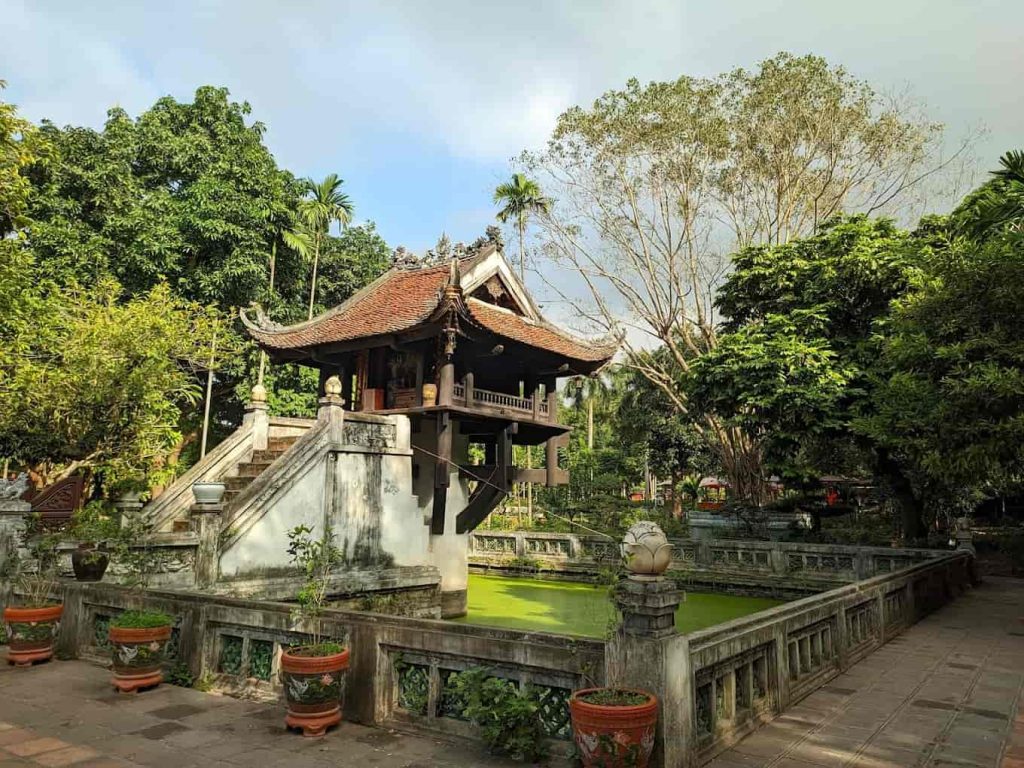
During the time of King Ly, the One Pillar Pagoda was situated in the Thanh Bao village of Quang Duc district, west of the Thang Long Imperial Citadel. Today, the temple is located in the park behind Ong Ich Khiem Street, right next to the Ba Dinh Square complex – Ho Chi Minh Mausoleum, in Ba Dinh District, Hanoi.
Significance and Legend of One Pillar Pagoda in Hanoi
More than just an ordinary temple, One Pillar Pagoda holds a special significance as it represents the lotus flower that King Thai Tong dreamt of being offered by Avalokiteshvara Bodhisattva. It was also the chosen place for the king to conduct religious ceremonies on full moon days and the first day of every lunar month, praying for the nation’s peace and prosperity.

Legend has it that King Ly Thai Tong was a devout Buddhist and follower of the Vajrayana sect. During his reign, Buddhism was flourishing, and he constructed 95 new temples and renovated all the Buddha statues. Particularly, during major Buddhist festivals, the king exempted taxes for the entire population.
One night in 1049, King Ly Thai Tong dreamt of Avalokiteshvara Bodhisattva gifting him a shining lotus flower. Upon awakening, he recounted the dream to his court officials. Subsequently, he, along with the Zen monk Thien Tue, who had guided him, decided to build a temple to honor Avalokiteshvara, which is the present-day One Pillar Pagoda in Hanoi.
History of the Formation of One Pillar Pagoda in Hanoi
In 1049, King Ly Thai Tong ordered the construction of One Pillar Pagoda. During the reign of King Ly Nhan Tong, it was refurbished, and the Linh Chieu Pond was added to the complex. Additionally, a gilded copper lotus was placed atop the column. Within the lotus, there is a purple-painted shrine with a sculpted divine bird on the roof, housing a gilded statue of Avalokiteshvara.
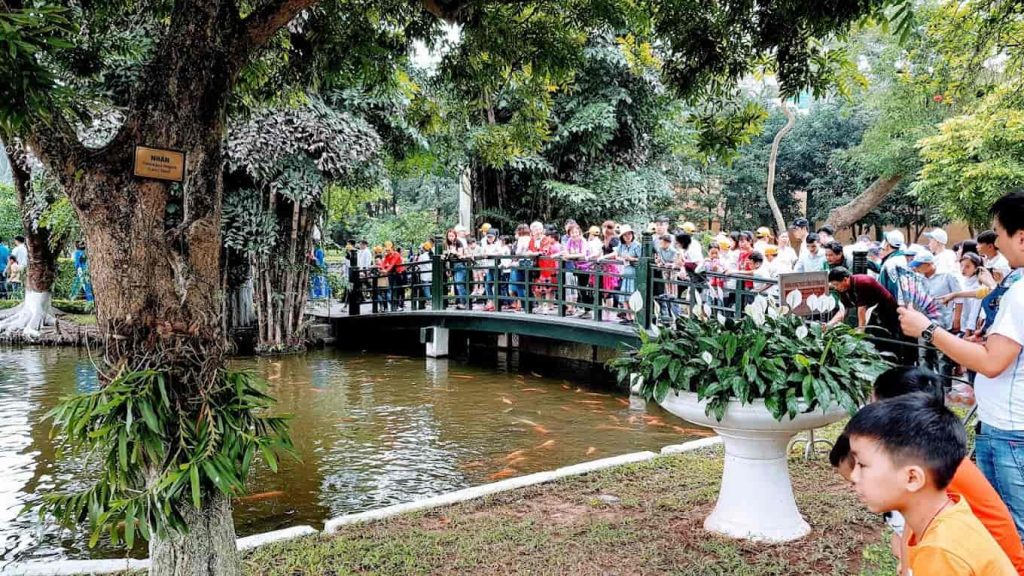
Over the centuries, the temple underwent numerous renovations and restorations during the Tran, Later Le, and Nguyen dynasties. In 1954, before the French forces withdrew from Hanoi, they planted explosives to destroy the temple. In 1955, the Ministry of Culture undertook the temple’s reconstruction based on the design by the renowned architect Nguyen Ba Lang, but on a smaller scale.
Reference: Introduction to Hanoi – The Land of a Thousand Years of Culture
What Makes One Pillar Pagoda in Hanoi Special?
One Pillar Pagoda in Hanoi stands out as unlike any other Buddhist stupa, and though not large in size, it carries a profound humanistic philosophy. Its beauty combines the aura of ancient reverence with the grace and delicacy of Buddhism. The temple, with its square shape, is entirely constructed from wood and tiled with ceramic tiles. Each side measures 3 meters, and it sits atop a stone pillar with a diameter of 1.2 meters, rising to a height of 4 meters (excluding the submerged portion under the water) – the most distinctive feature of the temple. The upper part of the pillar features eight wooden petals resembling the blooming of a lotus flower. The temple’s roof has a fiery crescent moon face with a dragon’s head embracing the moon.
The Three-Gate Entrance of One Pillar Pagoda
According to the Hanoi travel experience, when visiting One Pillar Pagoda, you must pass through the Three-Gate Entrance. In reality, this is a relatively recent expansion constructed in the past few years to accommodate the needs of visitors and worshippers during festivals and holidays. The Three-Gate Entrance consists of two levels with three pathways, with the central door being the largest and serving as the main entrance. At a glance, it resembles the architectural style of traditional Vietnamese communal houses and temples.
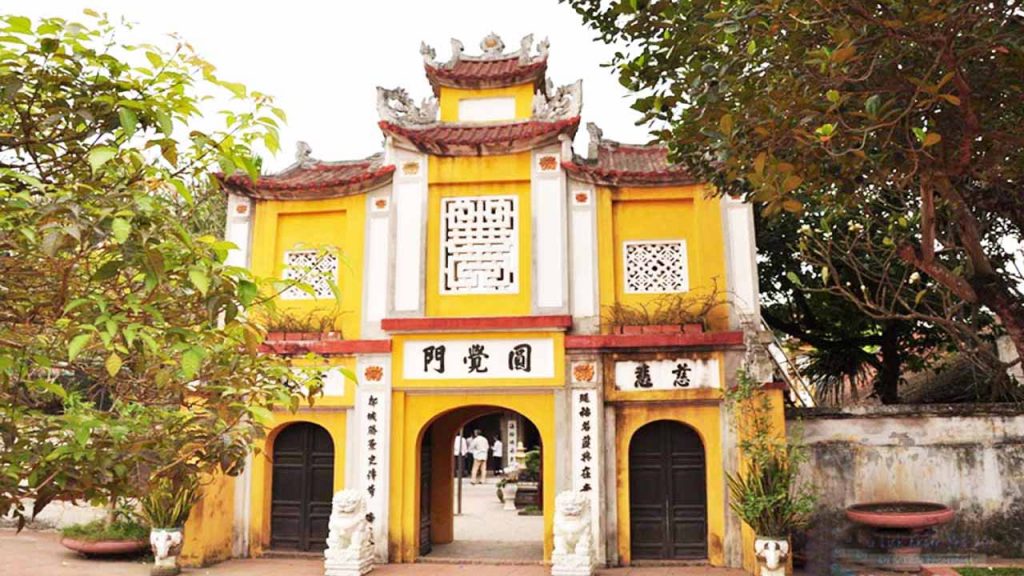
The Staircase Leading to the Main Shrine of One Pillar Pagoda
From the courtyard to the main Liên Hoa Đài shrine for chanting and worship, visitors must ascend 13 steps, each approximately 1.4 meters wide. These stairs date back to the time of the Ly dynasty and still retain the ancient charm of the architectural style of that era. Additionally, on both sides of the staircase, there are brick walls adorned with stone tablets that introduce the history of the temple.
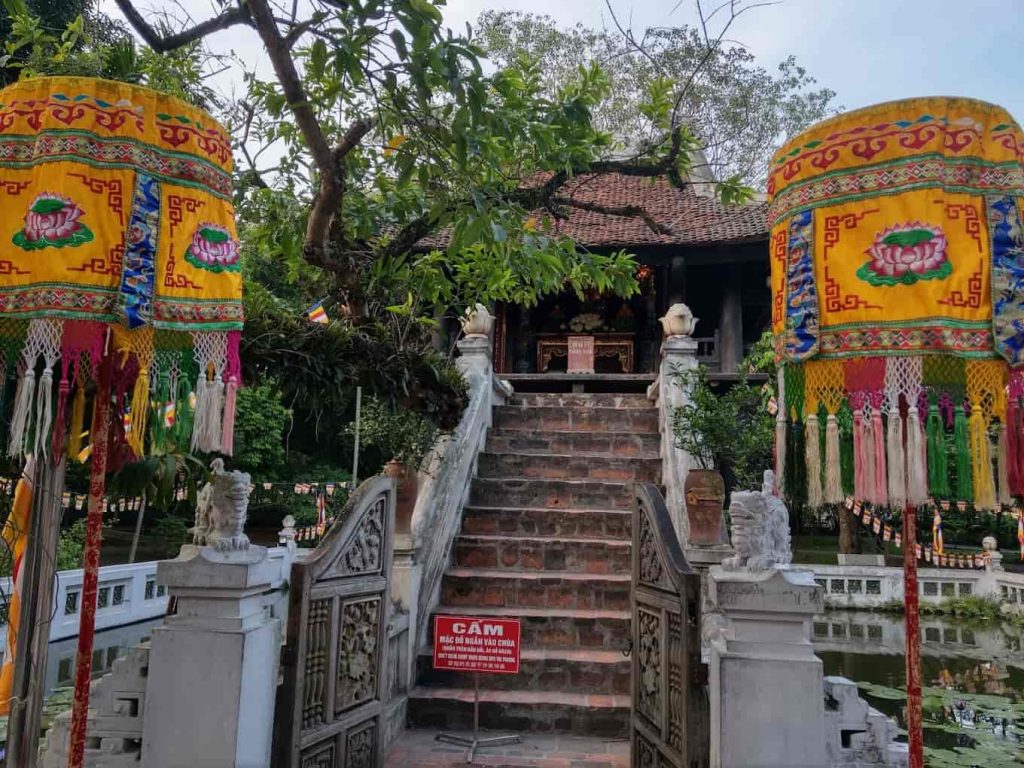
The Altar of Quan The Am Bodhisattva
The altar of Quan The Am Bodhisattva is placed in the central position within the Liên Hoa Đài shrine. The seated statue is positioned at the highest point, sitting on a golden-painted wooden lotus, surrounded by flower vases, bronze vessels, and offerings.
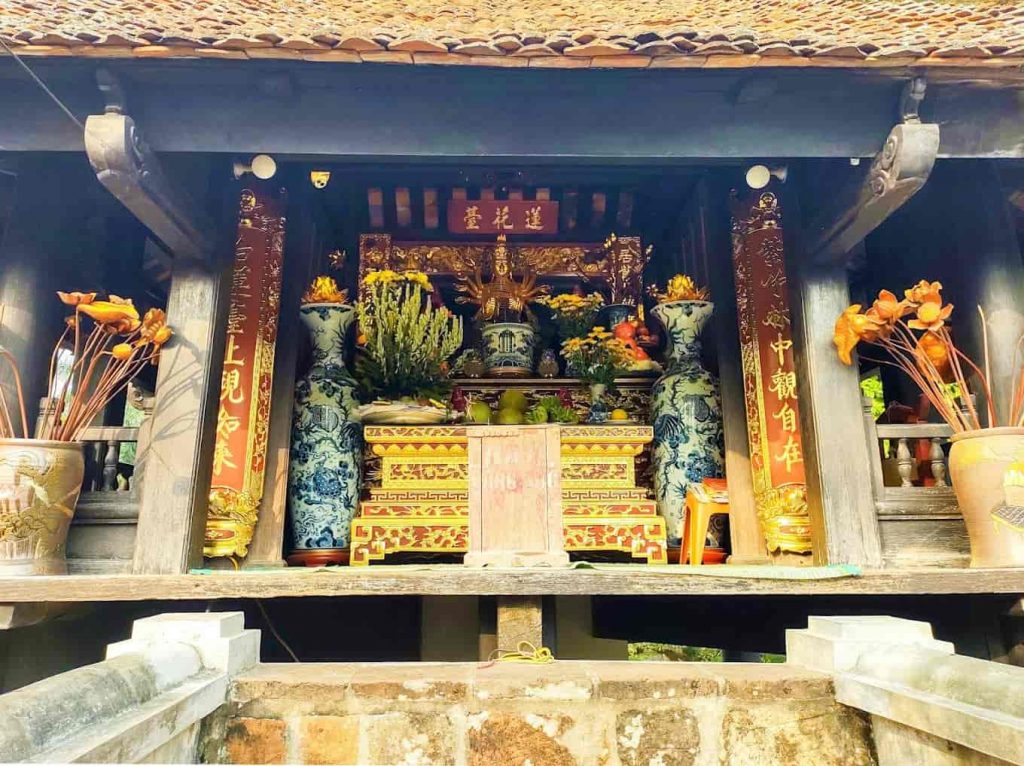
The Bodhi Tree in One Pillar Pagoda’s Courtyard
Not only is One Pillar Pagoda one of the 25 most famous temples in Hanoi, but it also bears witness to numerous historical events and diplomatic relations between Vietnam and other countries. When visiting the temple, you will notice a tall Bodhi tree in the courtyard. This tree was a gift personally given by the President of India to President Ho Chi Minh during a visit in February 1958. The Bodhi tree is where Siddhartha Gautama attained enlightenment. The presence of these old, shading trees further enhances the temple’s tranquility and mystical atmosphere.
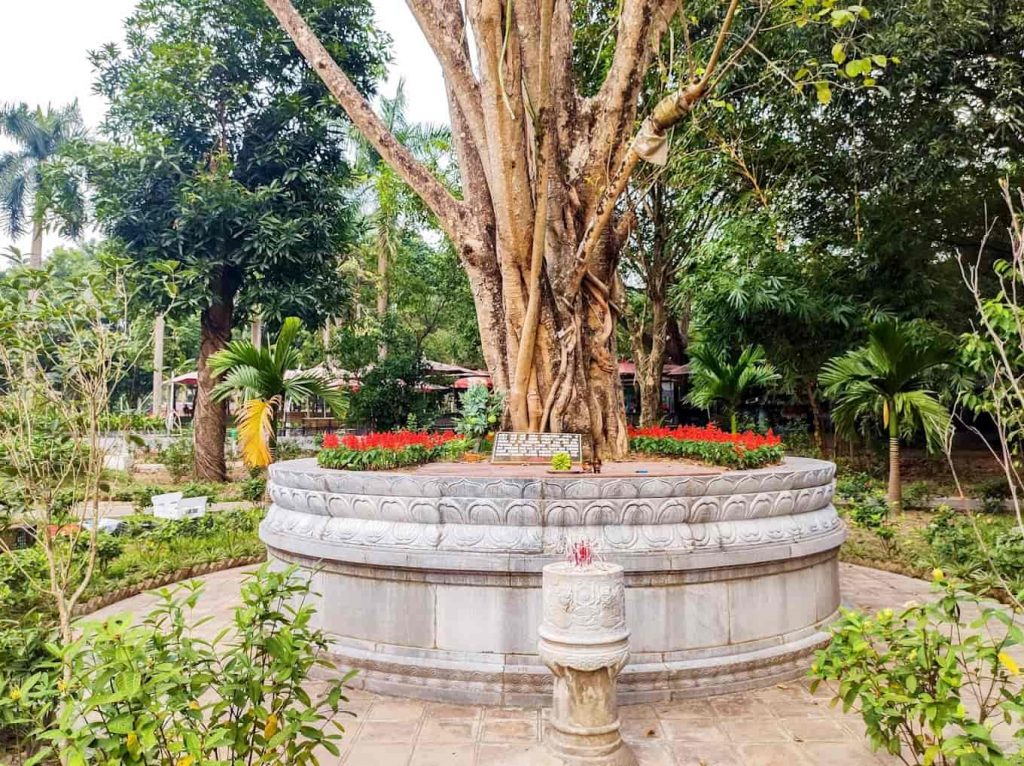
If you are looking for international Noi Bai Airport transfer services in Hanoi, book a private car service from Noi Bai Airport to the city center with DanangPrivateCar.com’s. With the private car service, a driver will greet you at the airport with a sign bearing your name and quickly take you to your hotel.
Exploring One Pillar Pagoda in Hanoi: One Pillar Pagoda Travel Tips
What are the opening hours of Hanoi, and is there an entrance fee?
As One Pillar Pagoda is located within the vicinity of Ba Dinh Square and Ho Chi Minh Mausoleum, its opening hours depend on this area. To visit this unique temple, tourists can enter from 7:00 AM to 6:00 PM. The duration of the visit typically ranges from 1 to 3 hours.
Regarding the entrance fee, if you are a Vietnamese citizen, admission to the temple is free. However, for foreign tourists, the fee is 25,000 VND per person.
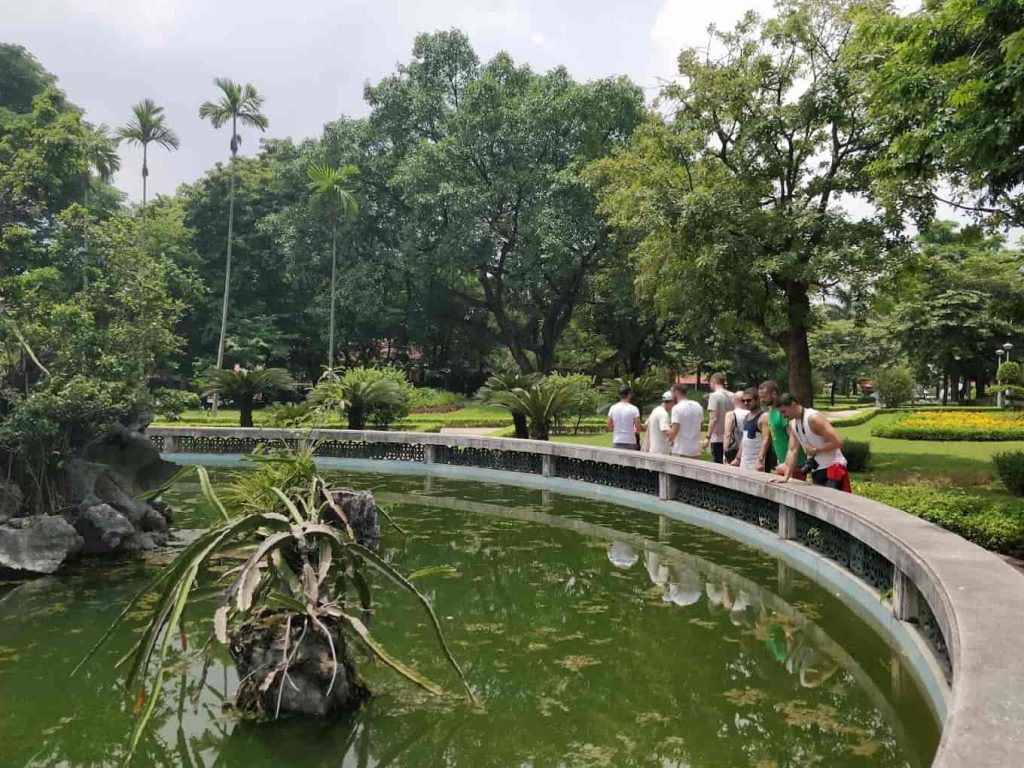
Directions to One Pillar Pagoda in Hanoi
There are several ways to reach One Pillar Pagoda; you can go by car, motorcycle, or bus. Some bus routes that can take you to the temple include bus numbers 09, 16, 22, and 34. If you’re traveling on your own, head north to the Hanoi Post Office. At this point, take the first exit at the roundabout onto Dinh Tien Hoang Street. Continue left at DC Gallery onto Hang Gai, and as you pass Hang Bong, you will come across Authentic Battrang – Ceramic shop. Then, proceed straight across Xoi Cam and turn onto Dien Bien Phu Street. The road intersects with Hung Vuong and Ong Ich Khiem, and right next to it is the destination you’re looking for.
Additionally, if you are traveling with family and friends or international guests who want to explore One Pillar Pagoda and many other attractions in Hanoi, you can choose to rent a private car with a driver in Hanoi from DanangPrivateCar.com’s. With the private car service in Hanoi, you will be picked up from your hotel, and there will be no extra waiting charges while you explore. The professional and experienced team of drivers will ensure you have a safe and comfortable journey.
What to Eat and Where to Eat When Visiting One Pillar Pagoda in Hanoi?
When you come to visit One Pillar Pagoda in Hanoi, you don’t need to worry about what to eat because this destination is located in the city center, just a few kilometers from the central streets. Therefore, there are plenty of dining options in the vicinity. Tourists can explore the street food at the Night Market in the Walking Street area, Japanese and Vietnamese restaurants on Cao Ba Quat Street, Le Hong Phong Street, and many more. You can enjoy a variety of delicious dishes, from savory food to ice cream, coffee, and desserts.
While there are many grand religious architectural complexes throughout the country, One Pillar Pagoda remains a familiar destination that tourists visiting Hanoi never forget to visit. For the residents of the capital city, it’s a tranquil place to escape their everyday worries.


Comments